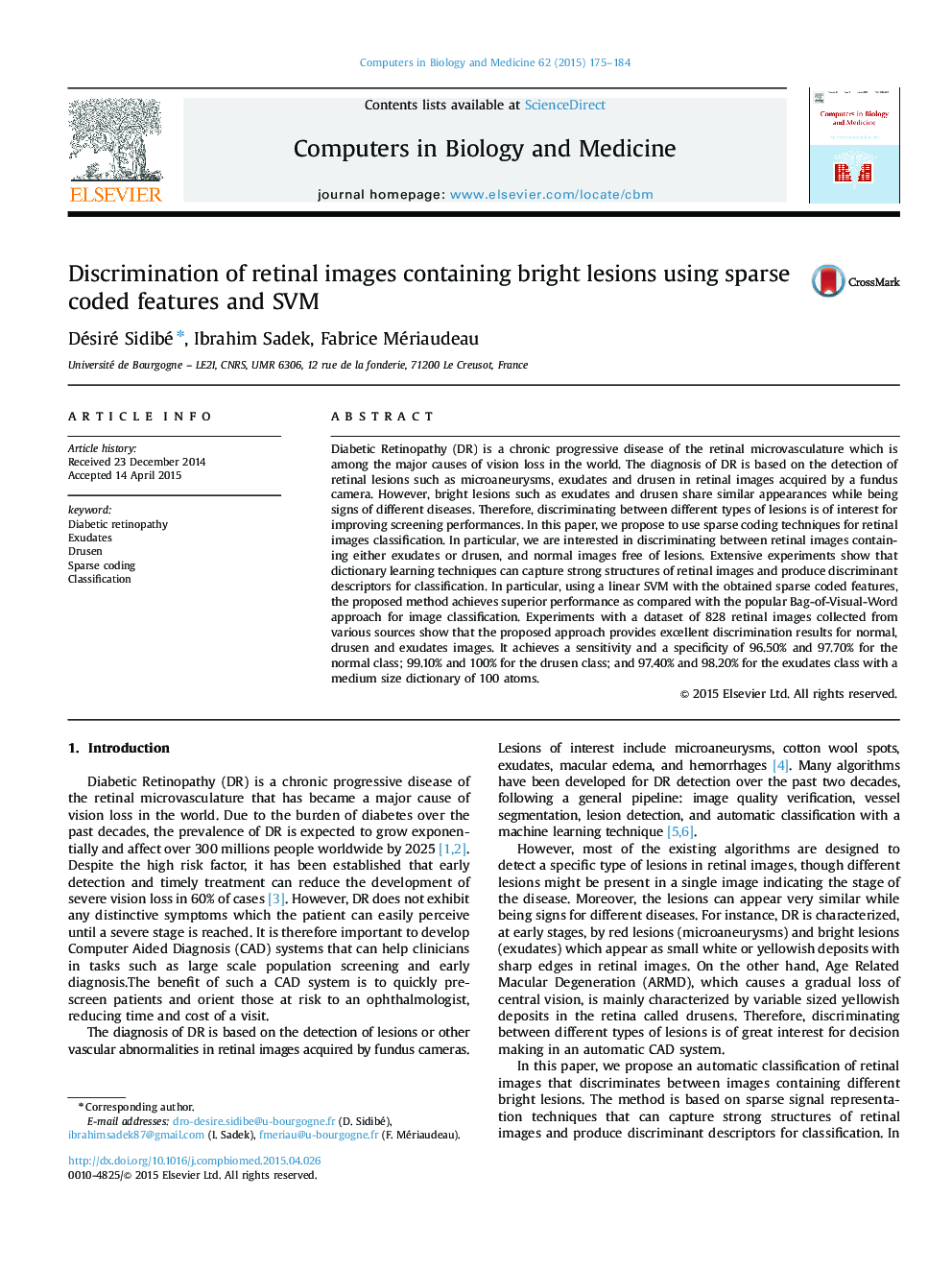| Article ID | Journal | Published Year | Pages | File Type |
|---|---|---|---|---|
| 6921268 | Computers in Biology and Medicine | 2015 | 11 Pages |
Abstract
Diabetic Retinopathy (DR) is a chronic progressive disease of the retinal microvasculature which is among the major causes of vision loss in the world. The diagnosis of DR is based on the detection of retinal lesions such as microaneurysms, exudates and drusen in retinal images acquired by a fundus camera. However, bright lesions such as exudates and drusen share similar appearances while being signs of different diseases. Therefore, discriminating between different types of lesions is of interest for improving screening performances. In this paper, we propose to use sparse coding techniques for retinal images classification. In particular, we are interested in discriminating between retinal images containing either exudates or drusen, and normal images free of lesions. Extensive experiments show that dictionary learning techniques can capture strong structures of retinal images and produce discriminant descriptors for classification. In particular, using a linear SVM with the obtained sparse coded features, the proposed method achieves superior performance as compared with the popular Bag-of-Visual-Word approach for image classification. Experiments with a dataset of 828 retinal images collected from various sources show that the proposed approach provides excellent discrimination results for normal, drusen and exudates images. It achieves a sensitivity and a specificity of 96.50% and 97.70% for the normal class; 99.10% and 100% for the drusen class; and 97.40% and 98.20% for the exudates class with a medium size dictionary of 100 atoms.
Related Topics
Physical Sciences and Engineering
Computer Science
Computer Science Applications
Authors
Désiré Sidibé, Ibrahim Sadek, Fabrice Mériaudeau,
